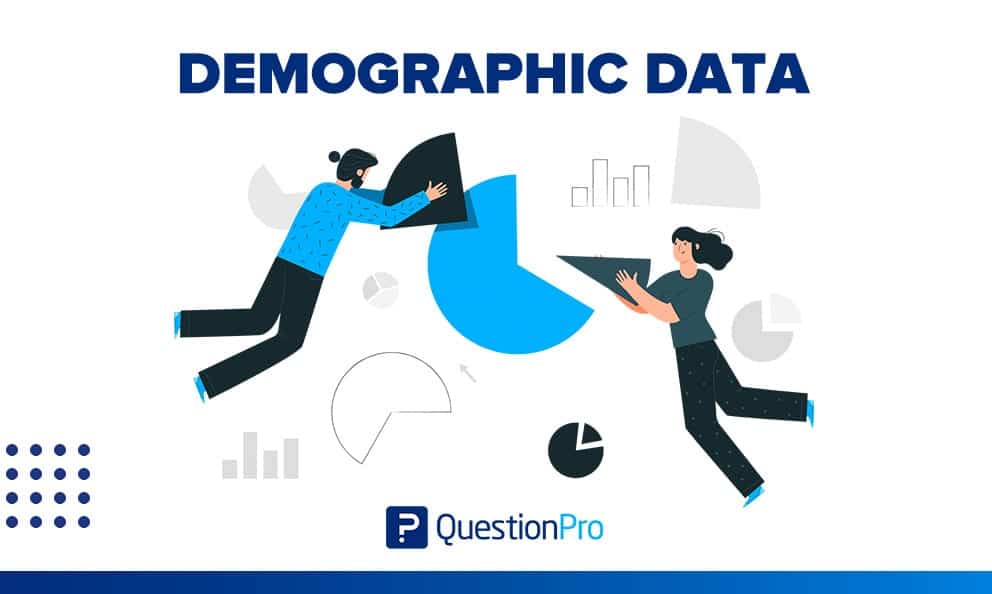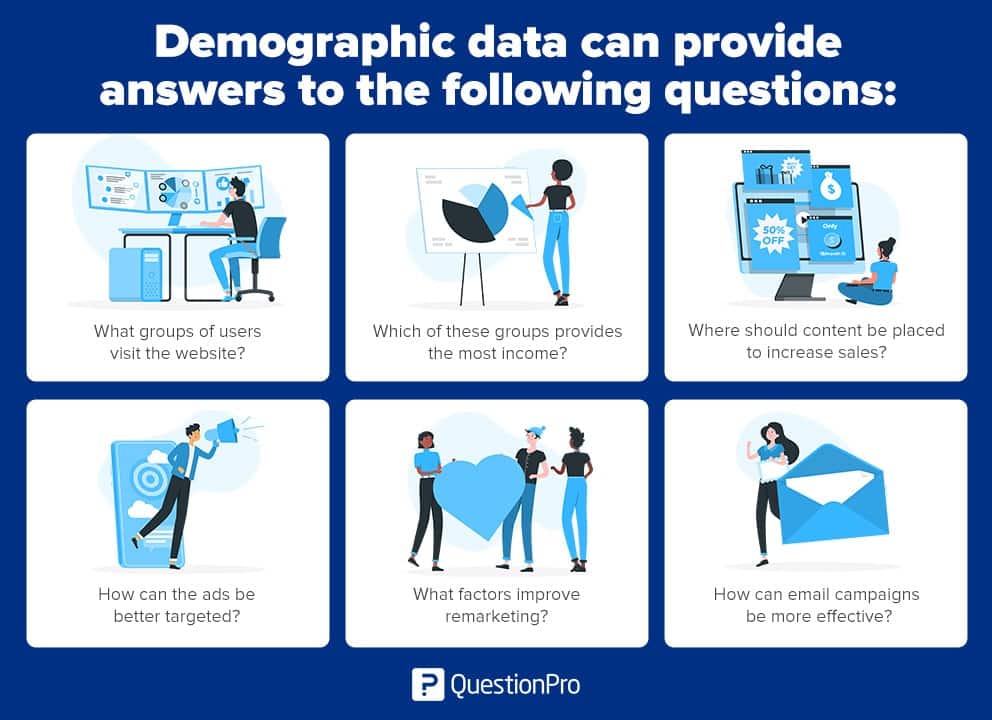
Demographic data helps us to deepen our knowledge of the target audience, and to create our buyer personas. It is primarily used to strategically tailor offerings to specific target groups, and can serve as the basis for business analysis and performance reporting. Practical business intelligence relies on the synergy between analytics and reporting, where analytics uncovers valuable insights, and reporting communicates these findings to stakeholders.
Let’s learn more about their characteristics and how to use them
What is demographic data?
Demographic data is information about groups of people according to certain attributes such as age, sex, and place of residence. It can include socioeconomic factors such as occupation, family status, or income.
Demographics and interests belong to some of the most important web analytics and consumer buying behavior analytics statistics.
The demographics approach in marketing is less on fertility and mortality data but more on age, gender, and interests.
LEARN ABOUT: Purchasing Process
Importance of demographics
In web analytics and online marketing, demographic data is collected to gain a deeper insight into the target group of a web page or to create buyer personas based on this information.
Demographic data is primarily used for strategic supply targeting and can also be used for business analysis and performance reporting.
Examples of demographic data
Here are some examples of data you can request in a demographic survey:
- Age: Age is one of the most important demographic factors. It is a good indicator of the groups of users that visit a web page, as well as the age groups that buy the most. Provides information about content that is interesting to a particular age group and where potential can be identified.
- Gender: Gender information shows which parts of a website or which products are more suitable for men or women. Classifying visits according to gender survey questions can serve as the basis for planning campaigns targeting men or women.
- Education: Data on education indicate, for example, whether users have attended university.
- Income: Income information makes it easy for you to target high-income people, for example, to buy a high-end product.
- Interests: The data on the interests of the users shows what interests the visitors of a web page and allows to draw conclusions about the behavior of the consumers. For example, if there is an affinity for certain product categories on the part of users, marketers can create ads focused on these interests.
- Language: For online marketing and website design, the language of the target group is important. This is especially true of internationally oriented online stores. For example, advertising and content should be geared towards the language spoken by the target group.
- Countries: What region, city or country do my users come from? This question is important to target advertising measures specifically to these geographic segmentation.
In addition, the use of demographic data allows segmenting user groups, for example to establish a connection between people aged 18 to 24 with certain keywords and interests. This type of targeting is especially useful for remarketing campaigns.
What does the demographic data tell us?
There are many different scenarios in which demographics are useful. Reports related to demographic data can provide answers to the following questions:

- What groups of users visit the website? Young users have different interests than older users.
- Which of these groups provides the most income? The most profitable clientele usually belongs to a certain age group.
- Where should content be placed to increase sales? Relevant content can be tailored to age, gender and interests.
- How can the ads be better targeted? Young female users want to see different types of ads compared to older male users.
- What factors improve remarketing? Thanks to segmentation, subsequent actions can be tailored to the target group and corresponding interests.
- How can email campaigns be more effective and more directly target specific groups? In this case, emails can be sent to specific demographic groups.
Demographic data provide much deeper insight into user behavior.
Information about user groups can be used to improve the effectiveness of advertising campaigns, optimize the offer of the website and, last but not least, drive sales.
At the same time, the legal use of this data should not be ignored: it should be anonymous, and the user should be informed about the collection of data, as well as about the use of cookies. Likewise, users must have the opportunity to object to data collection.
If you want to apply demographic analysis questions to your next survey, at QuestionPro we can help you. Create your free account and write your questionnaire now!







